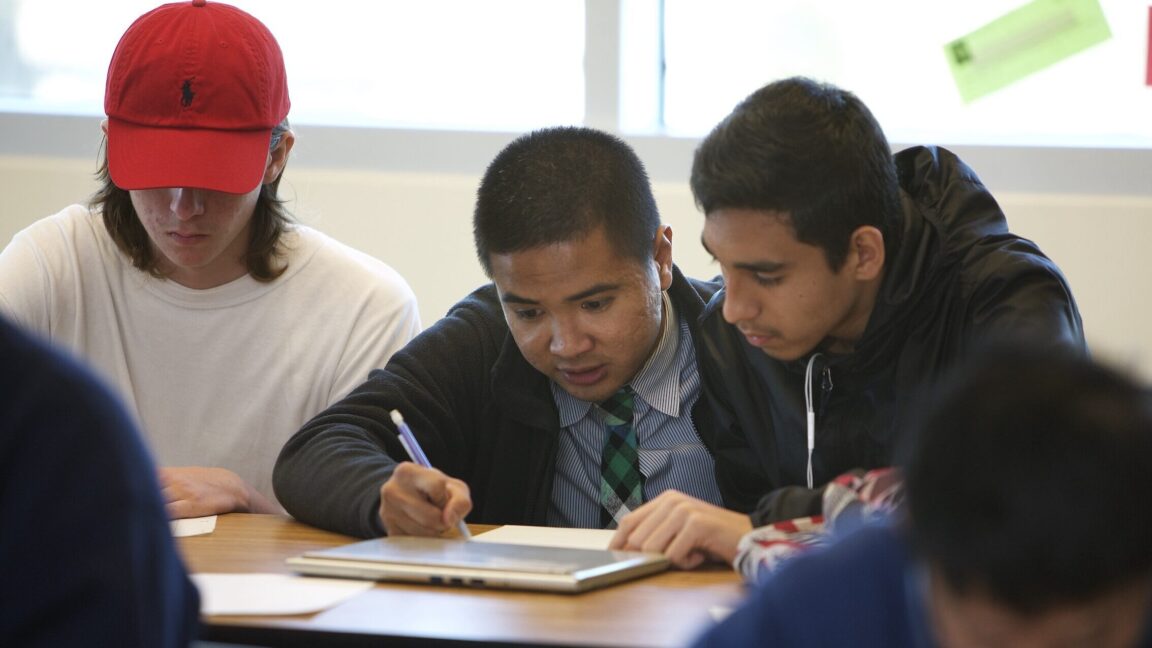Asking Questions to Find Our Place

As teachers we ask ourselves many questions: Is there a different representation I could use in my lesson? Are my students understanding this explanation? Are there colleagues I could collaborate with? What is the story I am trying to tell? Am I acting in accordance with my values? Questions are the basis for the inquiry process. We ask a question, we collect data, whether that be a survey, student work, or our own thoughts, and we share that data and discuss. It would seem that once we investigate a question we can find the answer and never need to wonder again. However, the inquiry process always seems to leave us back where we started, with more questions.
Inquiry can be about anything, not just the classroom. Perhaps it’s a planning practice you want to implement, or maybe it’s your relationship with your department members. The Kaleidoscope authors have asked a variety of questions about classroom practices and personal boundaries. Each author collected data, such as how many hours they worked, videos of their teaching practice, and hosta placement in a garden. Through their writing they synthesized their learning and are now sharing it with us. This leaves us back at the beginning, asking new questions. Our reflection on the pieces might lead us in different directions, but their learning is still evident.
We are all trying to find our place in the world and the only way we can do it is through asking questions and working our way through them, even if we never find the answers.
In “Burnout by the Numbers,” Cassie Barker asks, “What does sustainability look like in teaching and how does it compare to the typical American worker?” Her exploration leads us to think about our own time habits and what boundaries we should enact for ourselves. In “Creating a Curious Classroom Using Science and Engineering Practices,” Matthew Roper wonders how he can cultivate curiosity in his classroom. He works with a mentor, Meenakshi Sharma, to analyze what practices help students engage their curiosity during a lesson. Their discussion leaves us wanting to find our own curiosity in the world and challenge ourselves to have the same level of curiosity as Matthew’s students. Lastly, Sara Abeita digs deeper into the purpose and meaning of localized inquiry in “Growing Deep Roots in a Broken System” leaving us to come to terms with the things we can change and those that we cannot.
We are all trying to find our place in the world and the only way we can do it is through asking questions and working our way through them, even if we never find the answers. After reading this issue of Kaleidoscope, we hope you not only feel inspired to ask questions from these teachers’ stories, but you also feel prepared to start your own inquiry process. We invite you to get in touch with us at kaleidoscope@knowlesteachers.org if you are looking for a thinking partner to explore your own questions on your teaching practice.
Citation
Oakley, E. (2023). From the editors’ desk: Asking questions to find our place. Kaleidoscope: Educator Voices and Perspectives, 10(1).
